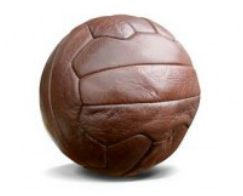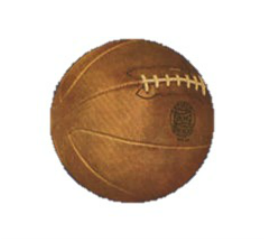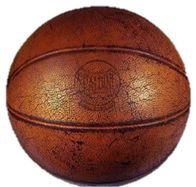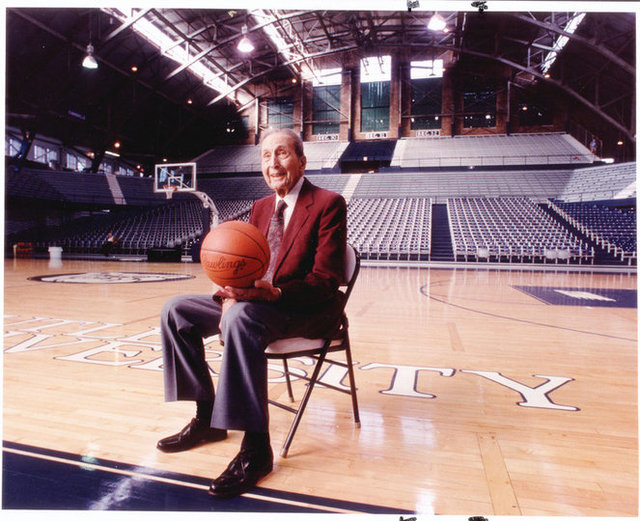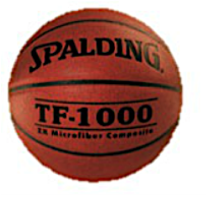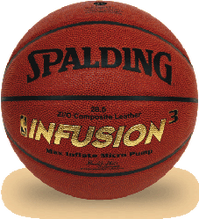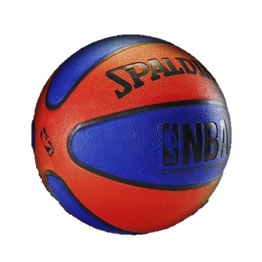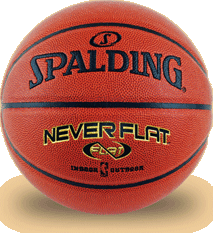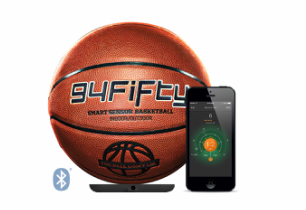|
The world's first basketball game, conducted under Dr. Naismith's supervision, was played using a traditional soccer ball, due to the elementary level of the game. The use of such a ball was soon after deemed unsuitable for the dribbling and handling requirements of the newly developed game, causing Dr. Naismith to question suitable designs for the development of a true basketball.
|
|
The first basketball, created by A.G. Spalding and Bros. in 1894, resembled more closely the design of a rugby ball than anything today associated with basketball. The ball, with circumference of 81 centimetres, was shaped with a rubber bladder, which in turn was surrounded by a covering of stitched leather panels. The hand-stitched nature of the balls resulted in varying sizes, causing further research to be invested into the creation of a standard-size ball.
|
|
|
One of the most significant developments in basketball design came in 1942, when the first moulded basketball was created. These balls, constructed in factories, were, for the first time in the sport's history, all created with a regulation circumference of 76 centimetres. Thus, with the elimination of inconsistent shapes and sizes, players were able to more thoroughly develop their skills, rather than take a chance on the ball's previously unpredictable bouncing.
|
|
|
Up until the 1950s, all basketballs, due to their creation from leather, were coloured brown, a hue difficult to see as both a player and spectator due to the ball's rapid on-court movement. This all changed when famous basketball coach Tony Hinkle introduced the orange ball, which was rapidly adopted in clubs around the world and is now stereotypical with basketball today.
|
|
In 1970 the NBA changed the regulatory design of their basketballs from four leather panels to eight, designed to enhance grip of the ball. Similarly, the creation of the world's first synthetic leather covering for a basketball in 1972 revolutionised production, vastly decreasing production costs.
|
|
|
Spalding were the first basketball design company to create a composite leather covering. A key benefit of including such technology into the design increased the ball's durability. Likewise, the use of composite leather material maintained the softness of traditional leather, however improved grip and control of the ball.
|
|
The integration of the Spalding Micro Pump into game balls extensively prolonged the lifespan of a ball. Where replacement balls had needed to be purchases when a basketball previously deflated, the built-in Micro Pump simply popped out of the ball when a pump was inserted, allowing balls to be inflated at any time.
|
|
|
In 2006, for the first time since 1970, the NBA changed their game ball to the Spalding Cross Traxxion design. The coverings of these balls were constructed with a synthetic micro-fibre composite material, shaped from two interlocking cross-shaped panels rather than the previous eight. Also included within the new form of material was a superior moisture management component, which resulted in improved grip throughout the course of the game. Similarly, the previous use of leather balls required 'breaking-in' before use in a game, to remove the slickness associated with using leather. The implementation of a composite material removed this factor, and enhanced consistency across all balls of the design.
In the same year, Spalding also released their NeverFlat technology, the first ever use of pressure retention properties within a basketball. The use of such technologies included the guarantee of full inflation for over a year, a ten-fold improvement on the inflation life of previous basketballs. |
|
The creation of the world's first smart sensor basketball has heralded a new era for basketball design and technology. No other basketball has ever had the technological capabilities of the 94Fifty, creating a whole new category of balls that are not used as a necessity, but in fact as a tool for coaching and technique analysis.
|
|
